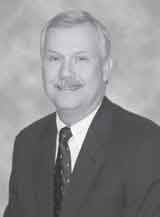From the Executive Director – May 2006
 Don’t look like you are
doing nothing!
Don’t look like you are
doing nothing!One of our long-time accountants, Mr Fred Kouri, was in our office recently. He was telling me about his very first audit many years ago. As it was his first audit, he was a bit nervous about the client’s perception of his job performance. His boss gave him this sage bit of advice: "Don’t look like you are doing nothing!" This statement really struck home with me, as an association executive.
Like all associations, the AASV wants to be perceived as responsive to our members’ needs. We can’t be seen as doing nothing. If we are to be successful, then we need to respond to the suggestions, concerns, ideas, criticism, and input of our members.
As an association, the AASV measures its effectiveness by our impact, not our membership numbers. The AASV has never been known for grand pronouncements, elaborate position statements, or taking unneeded action just for the sake of looking like we are doing something. I believe that we adhere to the admonition that activity does not always equate with action.
The recent annual meeting held in Kansas City is an example of our response to members’ needs. Prior to the meeting, several members from the United States and Canada had expressed concern over the growing incidence and severity of porcine circovirus type 2- (PCV2-) associated disease. Representatives of the AASV and the National Pork Board met with researchers in late 2005. Conference calls with practitioners and diagnosticians were held in early 2006. Arising from all of this communication was a clear message to AASV leadership to take action. It was clear that more needed to be done.
The AASV Board of Directors met on the morning of Saturday, March 4. On their agenda was PCV2-associated disease. After a general discussion, the board recognized that a distinct plan of action was needed. In this case as in many others, the board’s desire is to apply and leverage AASV resources to fully address the many issues surrounding this disease in an effective and timely fashion. The board passed a resolution creating a new ad hoc committee to specifically lay out a plan of action to be undertaken by the AASV in regard to PCV2-associated diseases. Appointments to this committee will be made immediately so that its first interactions can take place in the very near future.
The AASV, however, did not wait until the board meeting to act on the issues arising over PCV2-associated disease. First and foremost was a need for more information to be disseminated to our members about the disease. As a result, a seminar was scheduled as part of the annual meeting on Sunday morning, March 5, entitled "PCV2/PMWS – Understanding factors that impact disease expression and control." More than 200 attendees listened to presentations by nine knowledgeable speakers. The seminar proceedings sold out in a matter of hours and a reprint order has been placed.
Given the extremely high rate of pre-registration for the PCV2 seminar, the AASV leadership decided that members needed another opportunity not only to gain more information on PCV2-associated disease, but also to provide input to the AASV on what actions are needed. This opportunity was given to members on Tuesday afternoon, March 7, in a special "listening session." Once again, more than 200 members were in attendance at this session and heard presentations by three speakers on the disease in Canada, United States, and Europe. A great deal of discussion followed the presentations. This input will assist the ad hoc committee and the AASV leadership in organizing our efforts against this disease.
The AASV will also continue to work with a number of other organizations such as NPB, USDA, numerous universities, researchers, biologics manufacturers, and others in seeking answers and solutions. It will require cooperation and collaboration across the industry if we are to be successful.
I have received a few comments that can be summarized as "I hope we don’t make the same mistakes with PCV2 that we made with PRRS virus." If we wish to avoid making the same mistakes, then we need to clearly identify them. As of yet, however, I have had no one step up and clearly define what mistakes we made in the early years of dealing with PRRS virus. Therefore, I lift up the challenge to those who can still remember those days to think about what mistakes can be avoided this time around. The nagging questions remain: Are we doing enough? Is what we are doing action or merely activity? Are we doing the right things?
Let’s not look like we are doing nothing!
— Tom Burkgren